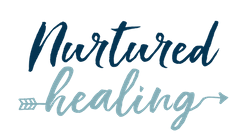Have you ever driven somewhere and realized after you arrived that you did not remember the journey? Your brain had its autopilot switched on. Once your brain received the cue (starting the car), it ceased participating and executed a routine.
We are creatures of habit. Literally. One paper published by a Duke University researcher in 2006 found that approximately 45 percent of the actions people perform each day aren’t due to decision making, but are done out of habit. Habits are actions we engage in repetitiously. Every time we take part in an action it reinforces our brain’s pathway for that behavior. Our brain literally wires to repeat the activity, and the longer we engage in a habit, the more difficult it becomes to change.
So how can we add new positive habits or remove the habits that do not serve us if we’re almost always operating on autopilot?
The book, “The Power of Habit: Why We Do What We Do in Life and Business” by Charles Duhigg explores the science behind habit creation and reformation. Duhigg explains the habit loop — originally discovered by MIT researchers — consists of three elements:
A cue - This is a trigger that lets the brain know which habit to use.
The routine - A mental, emotional or physical routine that plays out once the habit is cued — the behavior itself.
A reward - This lets the brain know if the habit loop is worth remembering.
Duhigg explains that when it comes to habits, the above loop is a powerful force at play. Our brains are regularly looking to save energy and habits are a result of that effort.
"In fact, when you develop a habit, the brain starts working less and less," says Duhigg. "The brain can almost completely shut down. ... And this is a real advantage because it means you have all of this mental activity you can devote to something else."
Habits are gradual and can emerge without us being aware of them then transition into a craving, which is the anticipation of the reward. As humans, sometimes we can feel driven by our cravings (you know this if you’ve ever been summoned to the kitchen by a bag of potato chips, like I have).
Although many habit change formulas exist, I like Duhigg’s because it provides practical strategies for making change. He notes that because bad habits are wired, we need to put our effort towards replacing them instead of eradicating them.
First, you select the habit you want to change and pay attention so that you can identify the cue or trigger for that habit. This may take some effort as automatic habits can make us obvious to the cues that trigger them.
Take potato chips (aka my kryptonite) for example. Awhile ago, I realized that when the afternoon rolled around I craved potato chips. If chips were available, (pssst, this is the routine) I would get up, grab a handful, wash my hands and head back to my computer to work. After a few minutes working, the craving would strike again.
Asking myself some questions, per Duhigg’s recommendation, helped identify the trigger. What time is it? Afternoon Where are you? At home working. How are you feeling? Like I need a break. A ha! That last answer is my trigger. I needed to take a work break, the feeling was my trigger and getting said break was the reward.
Once I knew my trigger, the routine and the reward I was seeking I began to experiment with the changing the routine (behavior) as Duhigg suggests. Once the afternoon chip urge would hit I decided I would do something to give myself a work break - crank a song and have a solo dance party, meditate, play a quick round of Two Dots (a game my kids and I can enjoy together). Anything that felt like an escape.
Whew! Bad habit broken. Chip consumption avoided. Right? But wait, was that because there were no chips in the house? I realized because of the conscious effort I was making, I was purposely not buying them to avoid their salty and crunchy allure.
I was put to the test when my husband came home with two bags, proclaiming “a great sale.” It wasn’t long before the call came and it was time to revisit my Q’s. The answer was still that I needed a work break but something new arose. I noted my affinity for the combo of crunch and salt. I decided to dive into something else crunchy - cucumbers (with a dash of sea salt).
Bingo! The break + crunch + salt was the answer for me. Now I find that I can incorporate more crunch and salt into my lunch and the latter two don’t pop up in the afternoon, leaving more time for my work break dance party. ;)
What habits do you want do replace? It may take some effort and experimentation but it is possible and YOU are worth it. Scroll down to download a free habit tracker with instructions.
Interested in reading “The Power of Habit: Why We Do What We Do in Life and Business” by Charles Duhigg. Click here.







